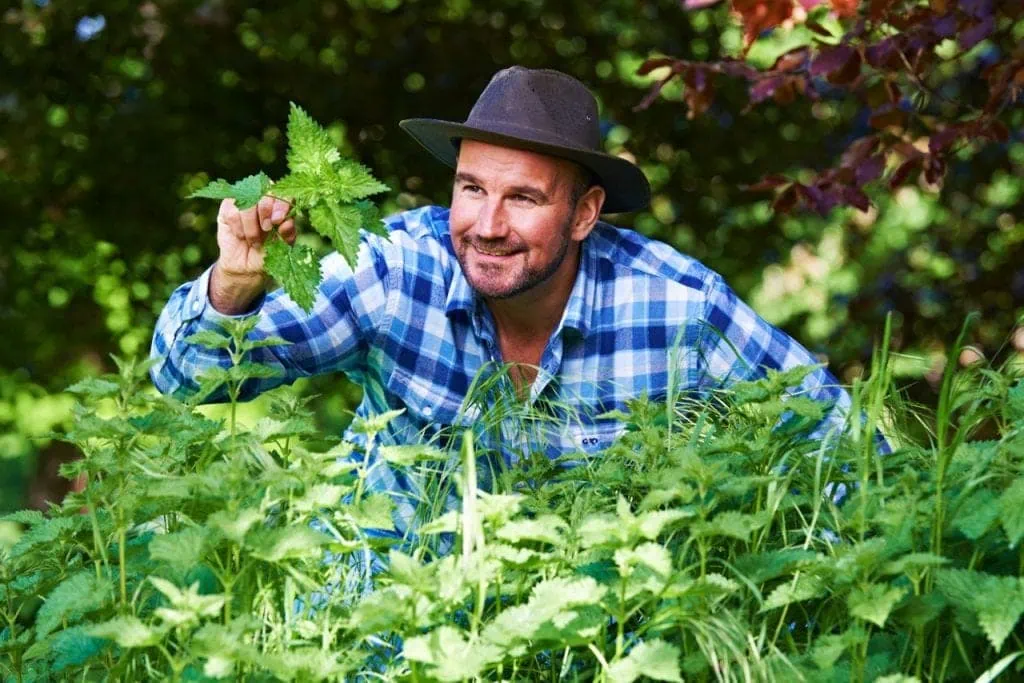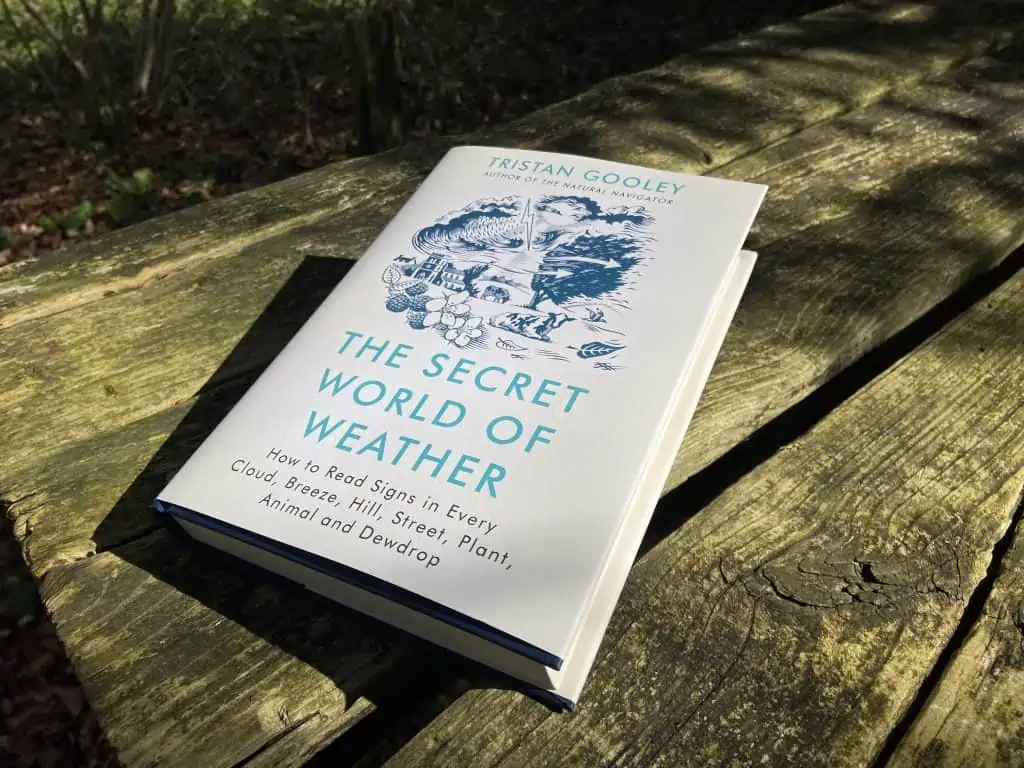Tristan Gooley - The Natural Navigator. (Image source: naturalnavigator.com)
A love for the art of navigation has inspired a successful career as writer, navigator and explorer for Tristan Gooley, as he tells me, Philip Simons.
Tristan Gooley, writer, navigator and explorer, is The Natural Navigator - and, perhaps, Tristan's career could be termed a calling, since his love for "the wonderful art of navigation" stretches back to childhood. Sharing his passion for the outdoors and navigation, he runs courses online and outdoors (here), and he has written prize-winning bestsellers, in which readers can learn how to decipher nature's clues and signs.
Like previous of Tristan's books, his latest, The Secret World of Weather, which was released in paperback earlier this month, is all about connecting with nature and navigating the outdoors, using the clues and signs that nature reveals to those who know how to see them; in this latest book though, the focus is on weather and microclimates.
"I was a restless kid that liked putting journeys together," says Tristan, responding to a question I ask about the origins of his passion for nature and navigation. After a brief exchange via internet and email, I sit listening to the recording of Tristan's answers to my questions about his career, his responses polite and considered.
The Secret World of Weather by Tristan Gooley. (Image source: naturalnavigator.com)
"However," he continues. "I came to realise that, on bigger journeys, contemporary navigation is sometimes less interesting - it becomes screens, dials, and increasingly digital. So, in my twenties, I turned things on their head and became more interested in much shorter journeys, using nature as my map and compass."
Each of Tristan's books provides readers with the key to reading that map and compass. His latest, The Secret World of Weather, looks specifically at how nature lovers and outdoor adventurers can decipher the clues and signs of weather. "In this book, I was bringing together two things that are related. First, there is a collection of all the signs and clues that our senses can detect in terms of what the weather has been doing, is doing, and will do. From the bigger signs, to the subtler signs that can be found in, for example, cloud patterns, and wind direction changes.
"And then," continues Tristan, "there is a real forensic, and hopefully passionate, understanding of microclimates. The big idea in the book is that what people refer to as 'the weather' is not the weather we experience. I mean, for example, the information given out in forecasts is typically about weather that is happening 100 feet above your head, whereas what we experience is the weather as it has been altered by trees or hills."
Tristan tells me a little about how he conducts research for his writing. "When I am learning, I use a happy and mutually supporting triangle - there is my own personal experience and observations; there is the knowledge and expertise of other people; and, there is knowledge that has been written down," he says. "I can start from any of those points on that triangle, though probably the most fun and often used starting point is when I have observed a pattern in nature. And I rarely think that I am the first to notice these things, so then I research. Though, often, these patterns haven't been observed or applied in a navigational context. An example would be when I noticed a pattern in how ivy grows - I didn't think I would have been the first to notice the pattern there, so I turned to academic botanical research. I came to understand how ivy, for part of its life, grows away from the light, and then, for another part of its life, will grow towards the light. I was then able to take that knowledge and apply it in a navigational context, which I hadn't seen done before."
Tristan Gooley's The Walker's Guide To Outdoor Clues & Signs. (Photo from personal collection)
Tristan has spent decades reading and deciphering these clues and patterns in the natural landscape, and he has witnessed changes there. "There is a pressure on space in most parts of the world. But, aside from building, one of the most interesting changes has been quite recent - a greater interest in open spaces. Thanks to the pandemic, people were told that they could not go out, only for essential reasons, and when people were told they could go a bit further afield, they wanted to get out and see what's out there. And, in those semi-wild areas of the British landscape, there has been more people out there. Perhaps, with more people out there, the more people will care about these spaces that maybe they hadn't seen before."
When I ask him how he foresees the natural landscape of Great Britain changing in the future, Tristan returns to the subject of building homes and infrastructure. "There is a pressure on space and a need to build homes. In my part of the world, which is Sussex, but I have seen it replicated in other areas, I've noticed this pressure on space is leading to the authorities having to think very carefully about where development happens."
Tristan though sees reasons to be optimistic. "Towns and villages are growing, but there is a greater desire to establish parks and other spaces that can't be built on. There is some tension there, but there is a determination to protect spaces for nature."
How To Read Water: Clues & Patterns From Puddles To The Sea by Tristan Gooley. (Photo from personal collection)
Tristan's books have given readers the opportunity to read nature's signs and clues, which in turn has gifted those readers with the means to reconnect with nature. As he explains to me, it is about using landscape, senses, observation, and general information to see what is happening in our own patch. Returning to his recent book. "The best way to describe it is in terms of rain showers. The forecaster might say, 'There may be showers in the afternoon.' It's very general. They can't do much better than that but we, using our senses, can say, 'Yeah, I think it's going to rain on those dark conifers on the windward side of the hill.'"
That, it seems to me, might be close to that primal connection with our natural world that long gone ancestors could have known.
As we wind up our Q&A session, I ask Tristan about the books he himself has turned to, and which books he would recommend to other budding navigators of the natural world. He tells me that, for an interest in navigation, there is Harold Gatty, an Australian navigator, and then there is Alexander von Humboldt, a geographer, explorer, naturalist. "Darwin has written some of the best accounts that combine adventure with curiosity, and a love of land and sea. But, as you might imagine, I am a voracious reader and I couldn't go through all those good books here. I am always learning - that's the fun!"
Books *
The Walker's Guide to Outdoor Clues & Signs is available here
Wild Signs & Star Paths is available here
How To Read Water is available here
The Secret World of Weather is available here
The Natural Navigator: 10th Anniversary Edition is available here
Just before you go, can I please ask that you consider supporting this blog with a coffee from ko-fi.com
I resist ad space, desiring to generate conversation rather than sales and clicks. Here there is nothing but the desire to discuss and explore matters ecological, environmental, and wild, without the influence of commercial and corporate binds. Just free and easy discussion, please.
Everything here, my writing, my photographs, is offered for free, to anyone that wants to read it. In this way, information and conversation can flow, and it gives everyone an opportunity to learn, including myself, more about our natural world. In turn, this might hopefully spark ideas about what we can do to help it survive.
If you are able to do so, please consider a donation to support via ko-fi.com, and thank you, to every reader and supporter.
*Disclaimer: this blogger is affiliated with bookshop.org because they support local and independent bookshops in the UK. If you make a purchase through any of the links in this article, the blogger might earn a small commission from the sale. However, the cost is not affected, and this has not influenced the content of this piece.







No comments:
Post a Comment